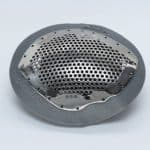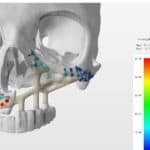The 3D Heals community, in collaboration with Vancouver Island Life Sciences (VILS), hosted an informative event on Wednesday, November 13th that showcased the innovative 3D printed health solutions being explored at the University of Victoria (UVic) in Canada. This ground-breaking work includes 3D printed prosthetic arms by the Victoria Hand Project (VHP) and the 3D printed neural tissues by the Willerth Lab. Mechanical design goes hand-in-hand with customizable bracing for VHP’s new endeavor to treat scoliosis, while Dr. Stephanie Willerth and her team are at the edge of a new frontier for 3D printing – bioprinting human neural tissues.

VILS is a group that brings together students, academics, and professionals in Victoria and across Vancouver Island. Their membership merely requires an interest in and enthusiasm for entrepreneurship and innovation in life sciences. Focuses of VILS include biotech, diagnostics, medical devices, pharmaceutical research, and software. This 3DHeals event was part of VILS’ monthly meetings.
Dr. Stephanie Willerth and VHP’s COO, Micheal Peirone, opened the event with an overview of the innovative work happening in their labs. The Willerth Lab works with induced pluripotent stem cells to engineer functional human neural tissue. Using the RX1 printer from Aspect Biosystems, the Willerth Lab prints bioactive scaffolds which direct differentiation of stem cells using physical and chemical cues. These tissues are used for disease modeling neurodegenerative disorders and cancer and provide valuable insight on disease progression and drug treatment therapies. The end goal of this research is to design tissues suitable for transplantation into the human nervous system for treatment of diseases and for repairing damaged tissue in the brain and spinal cord. A video outlining the work of the lab can be viewed here.



VHP described their recent successes expanding their line of 3D printed prosthetic devices to include a Children’s Hand and the LimbForge arm, a more cosmetically realistic arm to be offered alongside the functional VHP hands. They also introduced their newest customizable healthcare device: a 3D printed scoliosis brace that is being developed through Dr. Nick Dechev’s research lab at UVic and is in the initial stage of testing. The scoliosis brace offers an inexpensive solution for children and adolescents who require new braces every 9-12 months until they stop growing. Conventional braces can cost families $5,000 and they are not covered by healthcare. This is a major expense for families all around the world. The 3D printed brace will help prevent further curve progression of the spine and will cost a fraction of the price compared to conventional devices by using 3D printing. The brace is currently being tested in Nepal through VHP’s partners, Ability to Change Together Nepal (ACT Nepal) and LimbCare Nepal. As VHP already has an extensive network of 3D-Print Centers in 8 countries around the world, these scoliosis braces can be manufactured and fit by the same teams, making them readily available to those in need. Their next move? A pilot project in Kenya and the creation of an extensive network of print centers for remote communities in Canada and the United States.

About the Authors:

Emily Abelseth is a fourth-year biomedical engineering student at the University of Victoria. She has completed two tissue engineering-related co-ops, one under the supervision of Dr. Daniel Chen at the Bio-Fabrication Lab at the University of Saskatchewan in Fall 2017, and another under the supervision of Dr. Stephanie Willerth in the Willerth Lab at the University of Victoria in Spring 2018. During her co-op with Dr. Willerth, she was the first author on the paper “3D Printing of Neural Tissues Derived from Human Induced Pluripotent Stem Cells Using a Fibrin-Based Bioink”, published in ACS Biomaterials Science and Engineering. She continues to volunteer at the Willerth Lab and has contributed on two other published papers on 3D bioprinting.

Kelly Knights is in her final year of a biomedical engineering student at the University of Victoria. She has been volunteering with the Victoria Hand Project since September 2016 and completed a co-op work term with the Victoria Hand project in Fall 2018, where she assisted with the design, development, and testing of the new Force Doubler device and the Child’s Hand. Kelly has also been involved with the Biomedical Design & Systems Laboratory at UVic where she has assisted with the ongoing development of 3D-printed clubfoot and scoliosis bracing solutions.



 Nov 24, 2019
Nov 24, 2019 






Comments